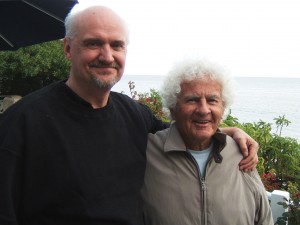By Bruce Wilson
So you’ve started into primal therapy. Great. You are diligent with your feelings, you go to group every week and you have frequent individual sessions. When something triggers you, you are first to book a session with a therapist and “go for it” – feel the feelings, get the connections and insights. And week after week, month after month, year after year, you keep it up. Therapy, therapy and more therapy. And yet somehow the old issues don’t seem to resolve.
We are told that some feelings that take a very long time to complete, especially first-line feelings, but if you find yourself getting into the same old jams again and again, if you keep struggling with the boyfriend who erupts in anger and gives you no love, if you keep failing to do what you really want to do, or to get the job that want to get, or find a loving relationship instead of one with endless struggle, and then go back for endless therapy, you might be using the therapy as a defence.
I’ve seen this phenomenon and Arthur Janov wrote about it a long time ago. Primal therapy is about changing your life; it’s not about endless sessions after sessions for years or even decades. But many people can retreat into the “comfort” of primaling instead of changing their life because the latter is harder to do. These people can become “primal junkies,” addicted to therapy as sure as one can get addicted to alcohol, tobacco, drugs, or sex. Things just don’t feel right without your weekly session, your weekly fix. You get antsy; you “need to feel” just like clockwork.
And of course, if that is happening then you are probably not primaling but abreacting. In my abreaction article, I mentioned that one of the signs of abreaction is a life without changes:
If there is a sine qua non of abreaction, it is in the lack of life changes made by the person abreacting. Abreaction keeps you “stuck” – no ventures are made, no risks are taken, no changes in jobs or career, no “going for it” in a real, healthy, meaningful way. Instead, one remains a prisoner of their pain, always reacting to circumstances, always triggered, always needing to “go down” to feel every few days, and always acting out.
This is not a fault of the therapy; it’s a fault in the way the patient is doing the therapy and a good therapist will catch this and address it, usually by telling you to do what you don’t want to do or what you are reluctant or scared to do. They will tell you to change your behavior and go for life in the way you want. If you want to play a musical instrument, play it. You want to write? Write! Don’t just think about it, and don’t try to be Shakespeare or Dickens on your first try. You will never be ready “someday when I’ve felt enough feelings.” Someday is TODAY. If the therapy is working then you’ll be thrown into a pot of feelings that you’ve been avoiding; the very feelings that have prevented you from doing what you want to do. It’s the primal dialectic. As Janov observed so many years ago, it’s far easier to “feel” another feeling rather than the feeling that is really there. That’s abreaction and it’s very sneaky.
So a little bit of behavioral therapy can help primal therapy go a long way, not by using head trips or conditioning, but by facing up to what you need and want to do and DO IT. A therapist I respect very much once said he would get his male patients who (for example) were scared to call a girl out for a date to do it right then and right there because it would immediately put them into the feelings they needed to feel. I’ve been there, not with arranging a date, but with needing to express to someone that I loved them. Pick up the telephone, get the voice message, and then WHAM! Up come the feelings. “I love you” becomes “I need you.”
So don’t be a primal junkie. Not only does it not work, but it costs a hell of a lot of money on useless therapy.


